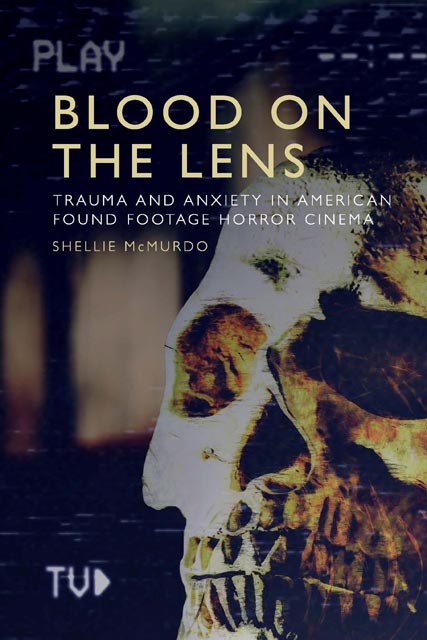10 - The footage yet to be found
Published online by Cambridge University Press: 13 April 2023
Summary
It’s obvious this sub-genre isn’t going away. (Turek, 2014)
Released in February of 2017, Savageland follows the fictional trial of Francisco Salazar during the aftermath of the 2011 massacre in Sangre de Cristo: a small town located near the United States/Mexico border, of which Salazar was the lone survivor. The trial of Salazar is presented as being biased in favour of the prosecution – who accuse Salazar of being the perpetrator of this murder spree – and littered throughout the narrative are interviews with residents of the nearby town of Hinzman. In these clips, locals proclaim that they ‘know what these people are capable of ’ and that – as a Mexican person – Salazar’s culture ‘worships death’, ‘celebrates violence’ and he is part of the ‘tide’ of illegal immigrants coming over the border to ‘wipe us off the map’. We learn that video footage supporting Salazar’s innocence – which has captured strange occurrences at the border – has been barred from the trial. This suppression of evidence is underlined by the existence of a roll of photographs showing images captured by Salazar during the massacre, which have similarly not been submitted as evidence and around which debates regarding authenticity circulate.
Distilled within Savageland are certain themes this book has explored. It blurs the line between fact and fiction through its aping of documentary form (like the films analysed in Part 1 of this book), but also through the appearance of testimony from Lawrence C. Ross Jr, a real-life writer of historical texts, and in this inclusion situates the fictive next to the real (like the three films explored in Chapter 7). The roll of film in Savageland stands as a counterversion of events being suppressed by morally ambiguous government officials (akin to several of the films covered in Part 2) and it focuses on discussions around America’s borders and tensions around immigration – showing a clear engagement with its contemporary cultural moment (as, I have argued, all of the films in this book do too). Moreover, Salazar’s use of the camera in Savageland is noted by the character of Len Matheson as being a defence mechanism, when he explains that ‘so long as you are behind that lens, so long as you are shooting through that lens, you are indestructible [… while you’re shooting, you can’t be hurt’: this brings the film in line with discussions in Chapter 5 regarding the compulsion to tape in crisis situations.
- Type
- Chapter
- Information
- Blood on the LensTrauma and Anxiety in American Found Footage Horror Cinema, pp. 193 - 202Publisher: Edinburgh University PressPrint publication year: 2022



